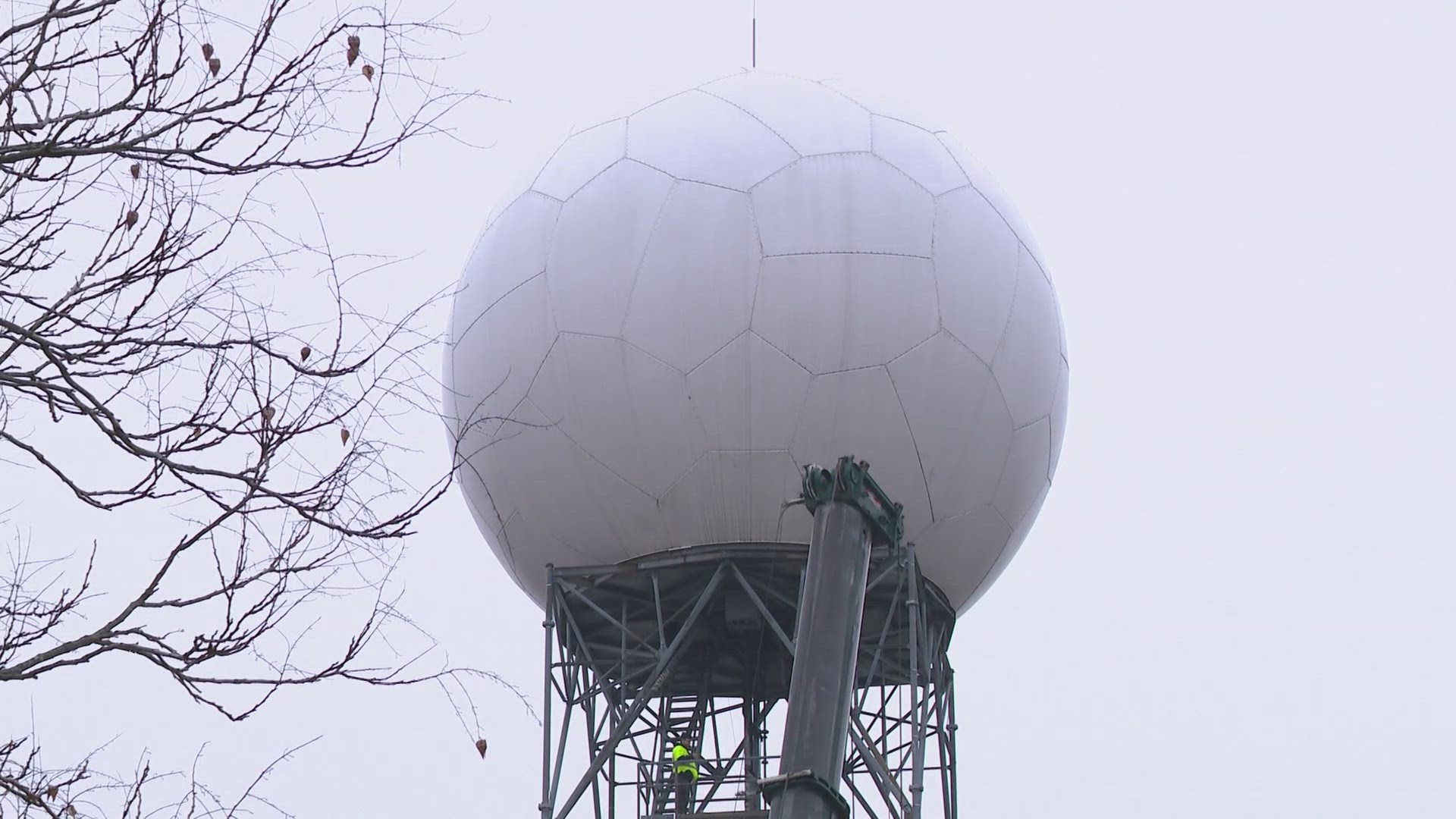ST CHARLES, Mo. — In a push to significantly improve weather forecasting and safety, the National Weather Service (NWS) in St. Louis is undergoing a crucial upgrade of its radar systems.
Early Thursday morning, the site outside of the NWS' office in St. Charles County was busy as crews, supported by a towering crane, worked diligently to replace the radar system that had exceeded its 25-year lifespan.
"Our radar has been spinning since the late '80s, so basically 40 years, 24/7 365, this thing has been spinning," said Kevin Deitsch, Warning Coordination Meteorologist. "So everything in it is starting to wear down."
The urgency of these upgrades becomes clear when considering the relentless operation of this equipment over four decades.
"We're replacing the guts of the radar, taking the dome off, taking the pedestal off, and replacing it with a new pedestal," he said, "So, really exciting morning for us here.."
The radar plays a pivotal role in public safety.
"When we're talking severe thunderstorm warnings, flash floods, tornado warnings, all of that uses radar information to tell us where the storms are and how bad they are," Deitsch said. "So, this is vital, really life safety equipment that we're replacing this morning."
The process includes meticulously reinstalling the radome onto the new pedestal, marking the third major endeavor in a series of nationwide radar updates. These upgrades are designed to extend the operational life of the country's weather radars well into the 2030s.
"Over 120 radars are being replaced with the same exact process," a project official said. "So we're kind of one of the last ones that they've done, so they got this down to a science."
The timing of Thursday's upgrade coincides with Severe Weather Preparedness Week in Missouri. Given the challenges of climate change and increasingly unpredictable weather patterns, the urgency for modern, reliable radar systems has never been greater.
"Really, there's no great time to do it," Deitsch said, highlighting the year-round threat of severe weather in the St. Louis are. "We got tornadoes in October. We got tornadoes in December. We have obviously winter storms throughout the winter. So you pick the best time that you can, and that's what we're trying to get the work done, and that's what we're trying to do here."
This project will be completed in the next two weeks. In the meantime, the NWS will rely on radars in central Illinois and from the Federal Aviation Administration for coverage.

